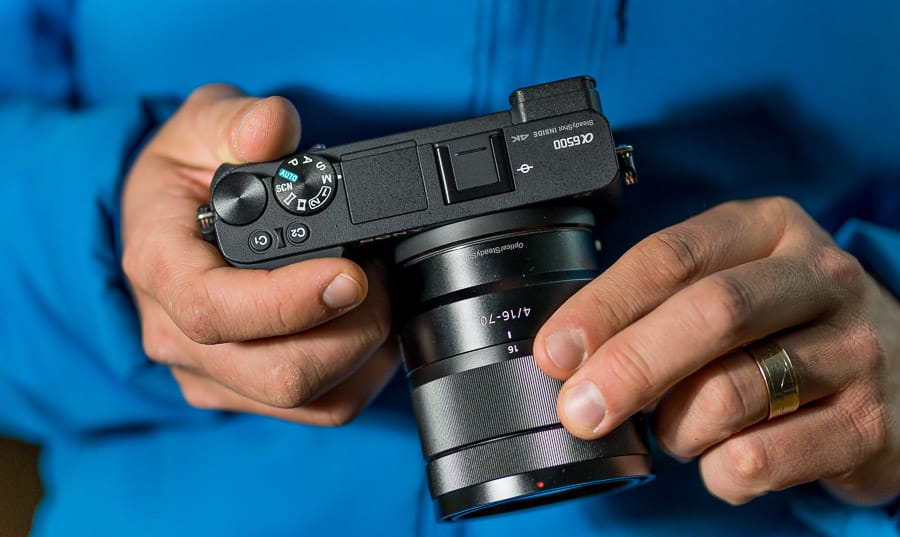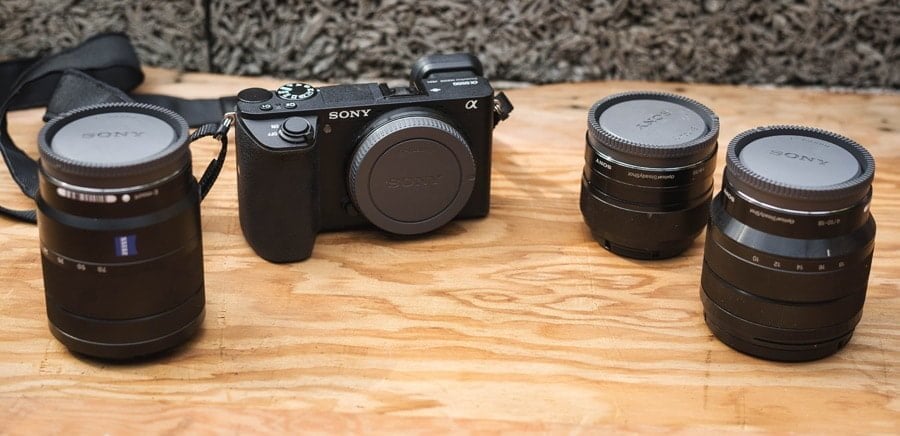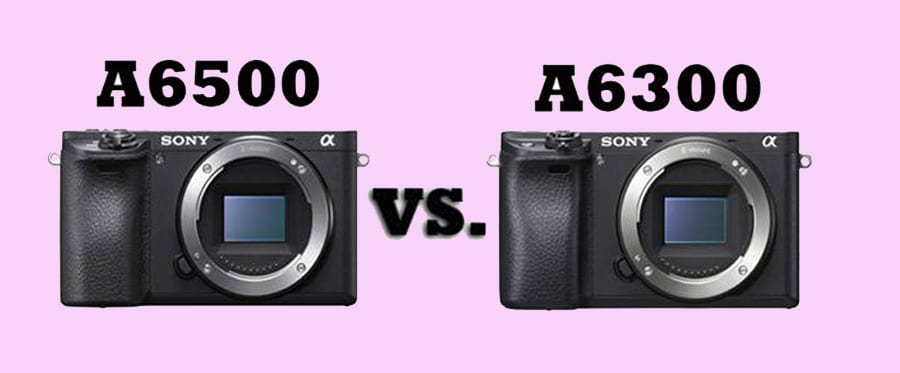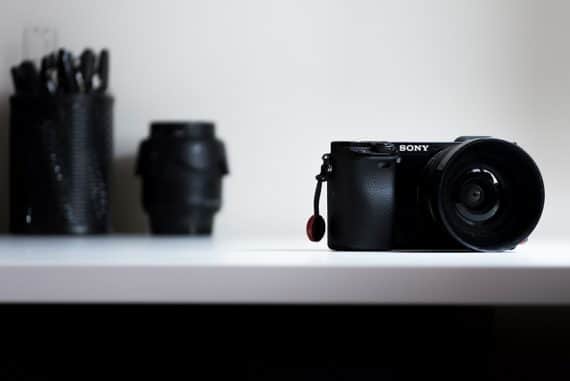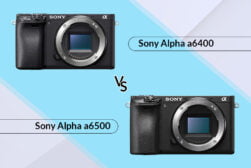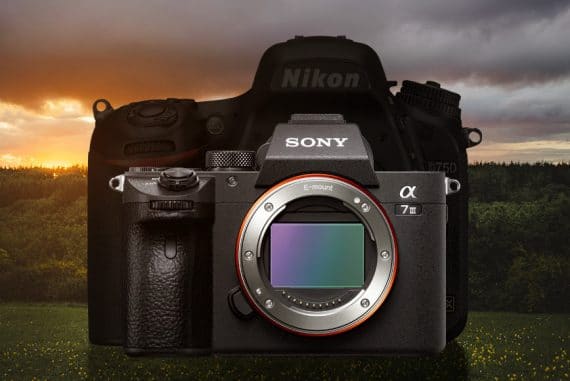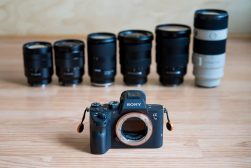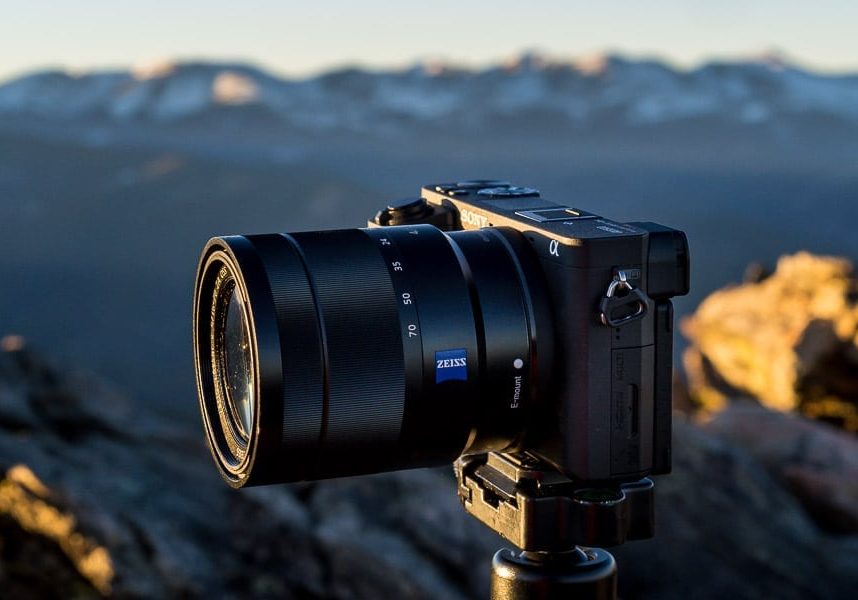
Sony Alpha a6500 Camera Review
Read this Sony a6500 review to discover wy this is the best crop sensor cameraand it works great for travel, adventure, and wedding photography.
Camera Reviews | Photography Gear Reviews | Sony Camera Reviews | By Marc Bergreen | Last Updated: January 24, 2024
Since my first camera purchase over fifteen year ago, I have been intrigued by how equipment has the potential to my job easier and more creative. With each new camera comes a new list of features. The trick is evaluating how they actually stack up and determining if it’s worth the upgrade.
My review of the Sony a6500 is based on using the camera for several weeks for both paid work and personal work. Mainly I wanted to see if it was a viable backup to my main camera, the Sony a7iii and if it would serve as a good option for casual family/travel/adventure photos.
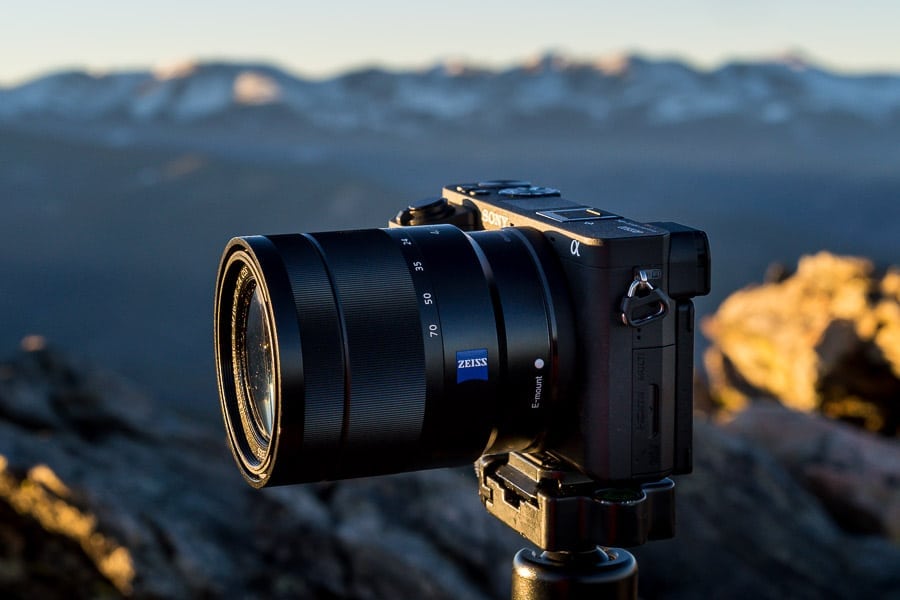
Impressive performance in a compact body. Highly recommended for all level of photographer.
I have been using Sony cameras for several years now, starting with the a6000 and a7ii and more recently the a7iii. With that said, I was also a Canon DSLR shooter for many years.
[Related: Sony a6000 review | a6500 vs a6400]
My main focus when choosing equipment is ensuring that it simplifies my process. While the gear lover in me appreciates bells and whistles, I don’t want to hear them.
Ideally, the equipment fades into the background allowing me to intuitively create stunning images.
Sony a6500 Specs
- Ultra compact body
- Fast & accurate autofocus
- Silent shutter
- Fast framerate (11 fps!)
- Touchscreen
- Limited max shutter speed 1/4000
- No front dial
- Poor ergonomics for large hands
First, let’s get the specs out of the way:
- Fast autofocus with 425 phase-detection AF points/169 point auto contrast
- 5-axis image stabilization
- 24.2-megapixel Exmor® CMOS sensor
- FPS: 11 with continuous autofocus and exposure tracking.
- 4K movie recording with full pixel readout/no pixel binning
- ISO for still images: 100-25600 (up to ISO 51200 in expanded ISO range.)
- ISO for movies: ISO 100-25600
- Battery Life: Approx. 310 shots (Viewfinder); 350 (LCD monitor)
- Buffer: up to 307 images (around 36 seconds) of high speed continuous shooting
- Eye AF available with AF-C
- Dust and moisture resistant
- Multi-slot reader for Memory Stick Duo™/SD memory card
- Max resolution 6000 x 4000
- Lens Mount: Sony E
- GPS: None
- Format: MPEG-4, AVCHD, XAVC S
- Articulated LCD: Tilting
- Max Shutter Speed: 1/4000 sec
Build Quality
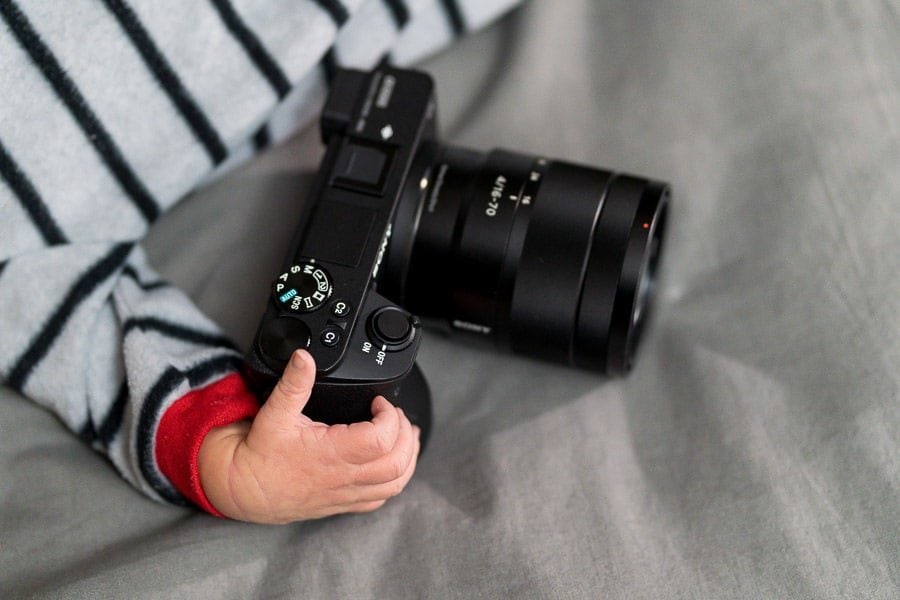
Sony a6500 + Sony 16-70mm f/4 + newborn
The build quality on the Sony a6500 appears sturdy and resilient. This is coming from someone who believes in using equipment, not babying it. What’s the point of having the camera if you are afraid to take it out of your bag?
People often get concerned about the Sony mirrorless cameras not being tough enough but so far my experience is positive.
Sure, they might not be as burly as the high end DSLR but they are lightweight making a drop less impactful and ergonomics less vital. More on ergonomics in a minute. My other Sony bodies have handled several drops without consequence. Perhaps I should review camera straps next!
Instead of having a full metal body, the Sony a6500 is a combination of plastic and metal components. Nevertheless it retains a sturdiness that made me feel comfortable about tossing it in my backpack without fear of damaging it.
Generally it felt tougher than the Sony a6000 that I’ve had for a while. Maybe that is because it is new while the my a6000 has taken a beating over the years on skiing and climbing trips. Either way, I was very satisfied with the build quality.
Another thing I was happy with was the weather sealing. It performed well even in a heavy snow storm. I have always been skeptical of Sony’s weather sealing because I felt like there should be a rubber seal like I was familiar with on my old canon lenses.
However, I have taken all of my Sony cameras out in full on downpour rain and never had an issue. The a6500 appears equally weather resistant. It’s nice not to worry about hurting my camera when I need it to help me get the job done.
Build quality is an important factor as I don’t want to worry more about the camera than getting the shot. Sure, I could use a camera strap and a plastic bag but I’d rather have a camera that can handle the workload.
Ergonomics & Handling
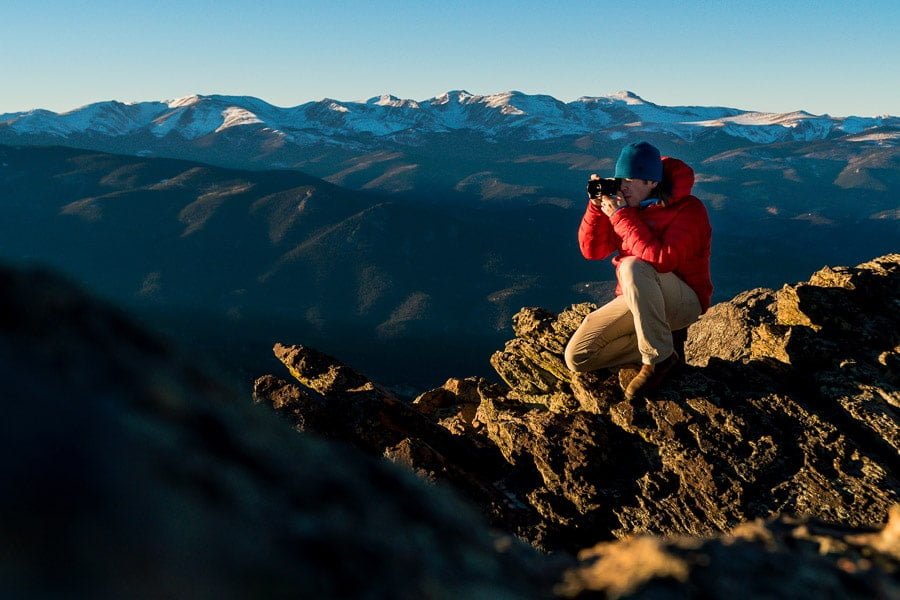
Sony a6500 + Sony 16-70mm f/4 | 1/1000 at f/5.6 ISO 100
Now on to ergonomics and handling. Photographers transitioning from Canon or Nikon are often hesitant about how the size of the camera impacts the ergonomics.
In my Shotkit article on switching camera systems, I offered the thought that perhaps a camera doesn’t need to have perfect ergonomics if it’s lightweight. It’s like not needing a hip-belt on a smaller backpack.
The main difference between the Sony a6500 and the a7 series is the size of the body. The a6500 is even smaller. Therefore, the controls were a bit more compact and not quite as quick to adjust. There are fewer dedicated custom buttons which is only a concern if you are using the camera at events and need to work very quickly.
Two things that I found myself wishing for were a front dial and a joystick button. I rely a lot on the front dial to quickly adjust shutter speed to fine tune my exposure and using the back dial was just not as effective.
The joystick would allow quick movement of the focus point allowing me to shoot with out focusing and re-composing which can sometime lead to missing focus.
The touch screen was an attempt to address this problem. It seemed effective but it just doesn’t fit with my style of shooting. I like to keep my eye on the subject and let my fingers work the controls while waiting for the moment. Pulling back from the viewfinder to use the touch screen was too much of a distraction to be useful for me.
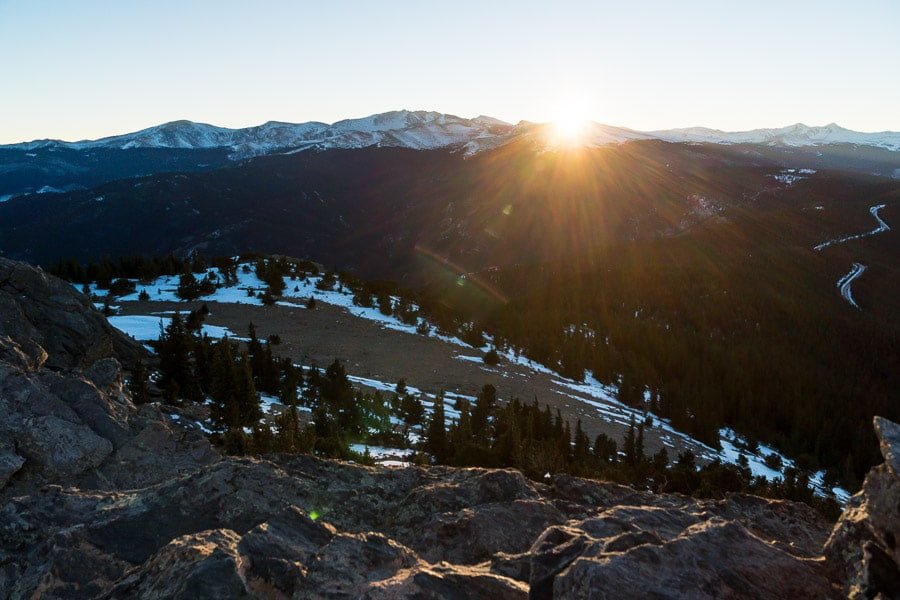
Sony a6500 + Sony 16-70mm f/4 | 1/250 at f/7.1 ISO 100
Despite lacking these two things, I was able to customize the buttons and dials to make my main adjustments quickly even for a person with moderate to large hands. The buttons and knobs are small, but are a definite upgrade from the Sony a6000. Each of the dials felt tight and tactile making accurate adjustments easy.
One other issue I ran into was that the camera had a max shutter speed of 1/4000 of a second. At first this didn’t seem like a problem but then I realized that you can’t shoot wide open apertures in bright scenes. This is something to keep in mind especially for portrait photographers.
If you’re looking for a camera to shoot more personal work (i.e. family, travel, and adventures etc) the ergonomics and handling on the Sony a6500 are completely adequate.
If you shoot in other modes like aperture priority or shutter speed priority, this will be even less of a concern because you need to make fewer adjustments.
Viewfinder/Screen Quality
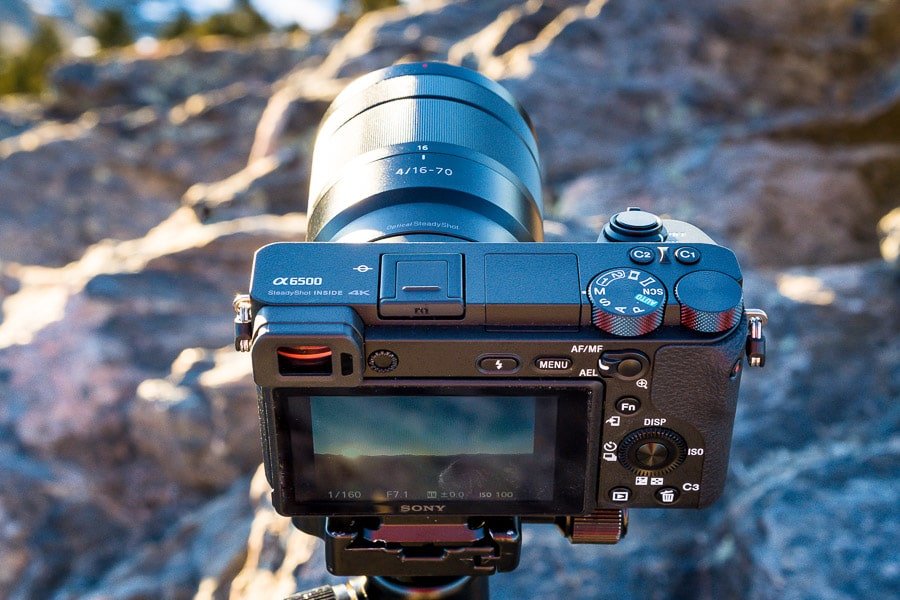
The LCD on the Sony a6500 is great quality and offers multiple viewing angles.
The EVF (electronic viewfinder) is one of the most important features on a mirrorless camera because you can see your exposure before pressing the shutter.
For the occasional overhead or very low shot, the flip out screen is very handy as well. I sometimes find myself using it to reach up or to the side to get a unique perspective that wouldn’t be possible without the tilt-able rear screen.
The electronic viewfinder on the Sony a6500 is crisp, vibrant, and bright. Even in low light, the viewfinder was accurate and helped me achieve proper exposure. I did find that it is a little dim to shoot in full sun, even with maximum brightness.
On a few occasions the illuminated screen caused me to underexpose a little but that works well with my style of shooting. I often find myself underexposing to preserve the brightest parts of the image. It is easier to recover shadows than highlights.
Both the EVF and the flip out screen are designed with usability in mind. They have the ability to make my job easier and quicker so I can focus on getting the shot.
Battery Life

Sony a6500 + Sony 16-70mm f/4 | 1/320 at f/4 ISO 640
Along with the small form factor, the Sony a6500 comes with a small battery. This became an issue for me mainly in cold weather. At more comfortable temps, the battery seemed adequate, however, I would definitely recommend keeping a few extras with you, if you plan on shooting a lot.
In future iterations, I hope that Sony will upgrade to the new Z series batteries which I rarely find myself needing more than 2 for a full (10+hr) day of shooting.
Smaller is not always better. It may be a benefit for certain things but battery life is not one of them.
Metering & Focus

Sony a6500 + Sony 16-70mm f/4 | 1/200 at f/4 ISO 640
The focus on the the Sony a6500 was accurate and faster than I expected, only a slight bit slower than my a7iii.
The other big advantage on the Sony a6500 is Eye AF – combine this with tracking AF and you’ve got a powerful combo for tack sharp portraits.
Occasionally the camera would struggle to lock focus in very low light but overall I was impressed with the capability for such a compact body.
I didn’t test the metering because I strictly shoot in all-manual, but with the EVF, you can accurately assess your exposure prior to taking a photo.
Additionally, the wide dynamic range gives you a lot of lattitude in your file if you miss the exposure in camera.
High ISO Performance

Sony a6500 + Sony 16-70mm f/4 | 1/500 at f/4 ISO 500
In terms of high ISO performance, the Sony a6500 is substantially better than its predecessors (especially the Sony a6000).
I felt comfortable shooting at ISO 6400 and the files looked great in Lightroom (after a bit of noise reduction, and as long as you don’t try to push the exposure more than one stop).
This makes it a competitive camera especially since it is using a crop sensor.
[Related: Confused about what version of Lightroom to buy? Read this.]
Image Quality

Sony a6500 + Sony 70-200mm f/4 | 1/2500 at f/4 ISO 640
I was very impressed with the images coming out of the Sony a6500. The dynamic range is awesome (13.7 stops) and the color seemed better than I expected (on par with the a7 series).
People have had issues with Sony color but I think they are finally resolving this.
When shooting side by side with the Sony a7iii, I was able to include both images in a gallery without much color correction (not the case with the a6000).
It is incredible to get such high quality images out of a camera so small.
Value for Money
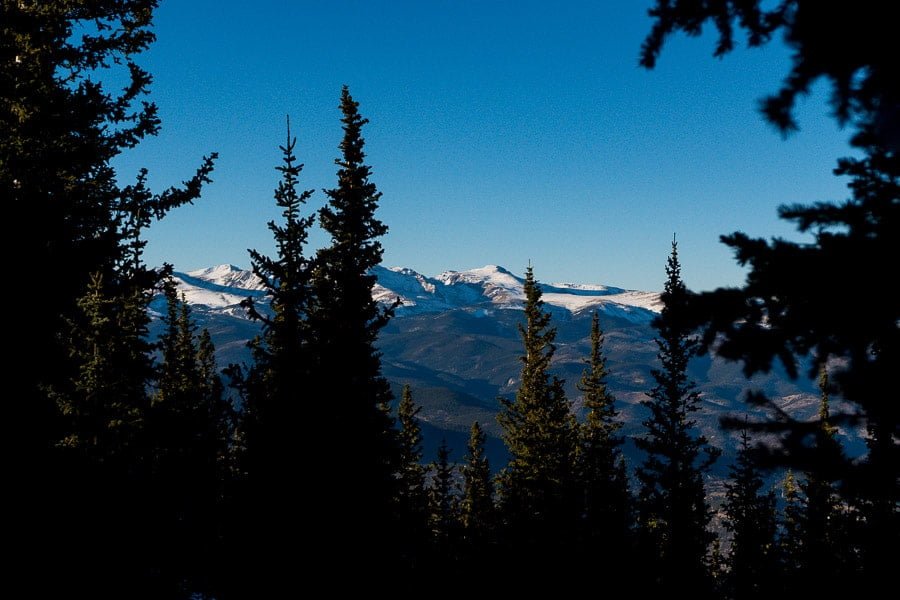
Sony a6500 + Sony 16-70mm f/4 | 1/4000 at f/4 ISO 200
I think this camera hits a sweet spot in value – see the latest Sony a6500 price here.
It produces spectacular 24mp images with tons of dynamic range while retaining its compact and easy to manipulate body. Overall, I think it is a fantastic camera for everyday adventures and travel.
Its small size won’t make you question whether to bring it because it easily zips under a jacket or in a backpack lid.
If you’re looking for the best value, the a6000 is incredibly affordable but you sacrifice low light performance and cool features like silent shutter and Eye AF.
Recommended Sony a6500 Lenses
The Sony a6500 has a wide range of lens options. Though it seems like more recently Sony has focused on their full frame lens lineup (fully compatible with a6500), there are still a wide range of options specifically designed for crop sensors.
The main advantage of crop sensor lenses is their smaller/lighter build. For my style of shooting as a wedding and adventure photographer, my top 3 lenses for the Sony a6500 would be:
1. Sony E 16-70mm f/4
- This is a fantastic all around lens with an equivalent focal length of 24-105mm. It’s a sharp and sturdy feeling lens that covers a wide range of focal lengths. A great starting lens for someone just getting into photography or a pro that needs a backup that covers a large range.
2. Sony E 10-18mm f/4
- Because of my passion for shooting outdoors, this is an awesome lens for capturing the environment. It goes super wide with an equivalent focal length of 15-27mm while staying sharp and feeling like a high quality full frame lens. The extremely wide focal length makes it less ideal for portraits but you won’t have any trouble fitting the all the action into the frame!
3. Sony E 24mm f/1.8
- I think this an awesome lens for people to improve their photography with. Many old pros swear by the 35mm focal length (this is a 36mm equivalent). It will inspire you to “zoom with your feet” and fill your frame with your subject. I also really appreciate the fast 1.8 aperture when shooting in low light. This fast & sharp lens pairs well with the a6500.
If I were to choose an additional 3 lenses for the Sony a6500, my choices would be:
4. Sony E 35mm f/1.8
- Everyone needs a “nifty fifty” and this lens provides an awesome medium focal length with a fast aperture for shooting in low light. It is an inexpensive and popular prime lens. The only downside I experienced was a little softness around the edges of the frame so be sure to keep any important subjects out of the corners when framing up scenes with this lens. A great value to add to your kit.
5. Sigma 16mm f/1.4
- This awesome fast, wide angle, prime lens would be my go to for astrophotography with the a6500. At f/1.4, it has the speed to capture the night sky at an equivalent focal length of 24mm. This would also be great for capturing wide landscapes and action/adventure.
6. Sigma 56mm f/1.4
- This is the last lens in my 6 top choices because I think it is one of my lesser used focal lengths. However when I do need a beautiful portrait of a person with nice bokeh and draws sharp attention to the eyes, nothing does that like an 85mm equivalent! An excellent fast prime lens for portraits or weddings especially when shooting in low light.
It really depends on what you’re looking to accomplish with your camera but I would feel confident with the above kit. I could capture the majority of my images with a slight emphasis on wide angle action/adventure style imagery.
Sony a6500 vs a7ii
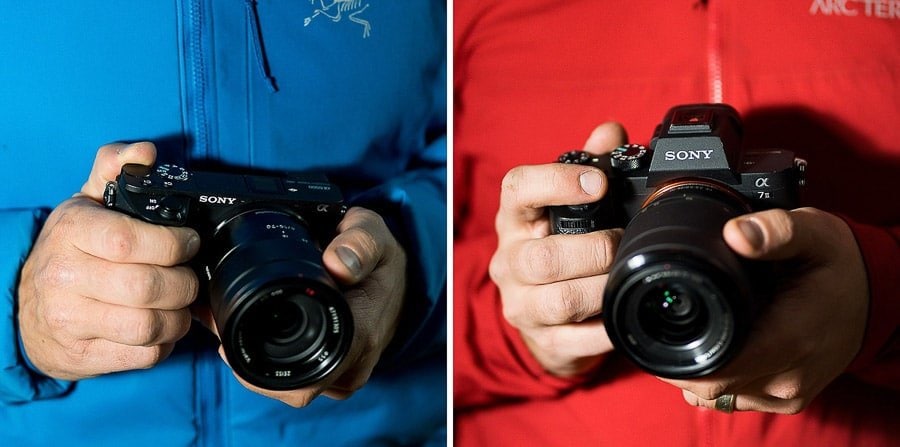
Sony a6500 vs Sony a7ii Size comparison
One question people often ask is which should I choose, the Sony a7ii or the Sony a6500. I think this question comes up because they are similar in price. The difference lies in their feature set. They are intended for different purposes.
The main differentiator between the two is full frame vs crop sensor, an age old debate. I think the best way to compare the two is with a pros/cons list:
Sony a7ii pros:
- front exposure wheel (see ergonomics section for why this is so important)
- full frame sensor = better high iso image quality
- full frame sensor = better bokeh and accurate focal length representation (i.e. 50mm looks like 50mm)
- one more custom button
- fits larger hands better (more ergonomic)
Sony a7ii cons:
- larger body (not as small/compact as a6500)
- more expensive & larger/heavier lenses
- slower to focus & lower frame rate (5 fps vs 11 fps on the a6500)
- small image buffer (will slow down if shooting lots of images in sequence)
- skin tones not as good as a6500 (based on my experience)
Sony a6500 pros:
- ultra compact yet capable body
- smaller lens lineup
- eye autofocus
- silent shutter
- fast autofocus and frame rate (11 fps!!)
- touch screen (may or may not be useful)
Sony a6500 cons:
- high iso image quality not as good
- max shutter speed 1/4000
- no front dial for exposure control
- bokeh not as good though larger depth of field can be an advantage for landscape images
- not as ergonomic to use
With all the pros and cons, I think the main thing it comes down to is size/money. The Sony a6500 is an amazing camera in a pint sized package. It is the little brother of the full frame a7 lineup.
The Sony a7ii is a less expensive body but the lenses that go with it are more expensive.
[Related: Recommended Sony lenses]
Therefore, if you want a fast and capable camera, go with the Sony a6500. If you’re getting started as a pro and want to go full frame, get the Sony a7ii.
You’ll be spending more on lenses but as time goes on, you can keep those while you upgrade your camera body. Lenses hold their value well and don’t need to be updated nearly as often.
Sony a6500 vs a6300
No review of the Sony a6500 would be complete without a comparison/contrast against its predecessor.
In many ways the a6500 is quite similar to the a6300 (see review). The 24.2MP APS-C sensor and 4D focus systems the same, as are its video capabilities, 11 FPS, and viewfinder. Its form factor and dial arrangement are also the same as both the a6300 and the entry-level a6000.
That being said, there are welcome improvements elsewhere.
The most noticeable is the in-body “5-axis” stabilization. That’s big, especially for those who really don’t want to lug around a tripod.
Another key addition is the touch screen. It’s quite basic, but it really is a game changer, especially given that there’s no joystick.
Sony has also increased the buffer in the a6500, allowing it to capture up to 307 full-size JPEG files or 107 raws, all at the 11fps burst rate. That’s a huge improvement over the a6300′s 44 JPEG and 22 raw limit.
While the sensor is the same as in the a6300, the a6500 has a faster large-scale integration (LSI) chip and image processing algorithm. This is a serious help in the noise-reduction arena, where it keeps detail while effectively reducing noise at the mid-high ISOs.
In addition to these big upgrades, there are also a few small tweaks here and there, such as the addition of a highlight spot metering mode and a slightly reorganized and more colorful menu system.
Another key difference is price. The while the Sony a6500 is coming in at around $1100 right now (body only), the Sony a6300 is at a quite affordable $822 (with kit zoom lens).
So if touch screens aren’t your thing, you don’t need the IS, and/or you don’t do a lot of low-light photography, you’ll save around $300 going for the a6300.
Personally, I prefer the a6500. The touchscreen really helps with focus and the new LSI chip really makes a huge difference. Add to that the fact that the IS works with both stabilized and non-stabilized lenses and $300 doesn’t really seem like that much of a difference. But I already have FE lenses I can use with it. If you’re starting out from scratch and don’t have much of a budget, the a6300 might be the right choice.
Sony a6500 vs a7iii
Full frame or crop sensor – which to choose? There are a lot of similarities between the APS-C a6500 and the full-frame Sony a7iii, with a key difference being the price tag. (The a7iii is still hovering just short of $2000, body only.)
Both cameras have an E-mount, have decent continuous burst speeds (10fps for the a7iii and 11fps for the a6500), and live view with blackouts up to 8fps. They also both have WiFi, NFC, Bluetooth connectivity
But there are a lot of differences also – and not just the sensor and body size.
To begin with, the design and ergonomics are considerably different between the two models.
The a6500 inherited the flat-topped design of the a6300 and a6000 APS-C models. It also has a viewfinder at the top left of the body rather than in the middle. The grip, though larger than the a6300, is still quite a bit smaller than the a7iii as well.
The Sony a7iii, on the other hand, has a bigger, sturdier build. The increased size (and weight!) allow it to offer more dials and buttons for easier control. These include an additional control dial, as well as an AF-ON button and an AF joystick.
The a7iii’s larger body also allow give it room for a dual SD card slot. One slot is standard UHS-I while the other is UHS-II compatible. The a6500 only has one slot and it’s only UHS-I compliant.
The a7iii also comes with a welcome headphone output, making monitoring the sound for video infinitely easier.
Both cameras have an OLED electronic viewfinder but the a7iii’s is larger and has a higher magnification (0.78x vs. 0.70x). The resolution is the same, however, at 2359k dots.
As far as the LCD screen is concerned, both cameras have 921k-dot resolution. The a7iii articulates a bit more, but that’s pretty much the only difference.
The sensor and processor is where some of the most obvious internal differences come.

Size difference between the full frame sensor of the Sony a7iii vs crop frame sensor of the Sony a6500.
The a7iii comes with a brand new BSI full-frame CMOS sensor which allow for superior light collection. Combined with the latest BIONZ X image processor, the a7iii is just amazing in low light situations. Its base range ISO starts at 100 and goes to 51200, expandable down to 50 or up to 204800. (Extended values only go to 102400 for video.)
The Sony a6500, on the other hand, has a smaller, APS-C sized Exmor CMOS sensor. Its maximum native ISO sensitivity is 25600 (51200 when extended). That’s a big difference.
Both cameras the new, front-end LSI chip that improves the processing speed and substantially reduces noise.
Also, both cameras offer 14-bit compressed Raw but only the a7iii has an uncompressed Raw option.
As far as autofocus is concerned, both cameras are strong performers, but the a7iii has the beefier, faster system.
The a7iii has an incredible 693 phase detection and 425 contrast detection points across 93% of the frame. (It’s not known for amazing autofocus for nothing!) Based on the a9, it’s quite possibly the best autofocus system on the mirrorless market.
The Sony a6500 uses fewer points (425 phase detection and 169 contrast detection), but still does an amazing job. In normal light I often couldn’t tell the difference.
Another key AF difference, though, is that the a7iii comes with an AF Area Recognition mode. This allows you to assign frequently used focus point settings to custom buttons for fast recall. It also has an AF Track Sensor that allows you to adjust the responsiveness in continuous mode.
Both cameras feature EyeAF and Face Detection.
The buffer capacity is significantly different on each camera. The Sony a7iii can up to 177 frames in JPG format and 89 in Raw format in a single burst, while the a6500 can go up to 233 JPGs or 107 Raw frames. Keep in mind though, with the difference in card slots – the a7iii has a UHS-II compatible option – the difference in performance might not be so noticeable.
Also, the Fn and menu buttons on the a7iii are available immediately after finishing a continuous burst, even while data writing is in progress. That’s super useful.
Shutter speed is another place where the two cameras differ. They both use an vertical-traverse focal plane type shutter that produces fewer vibrations than previous shutters, but the a7iii is considerably faster, reaching into the 1/8000s. The a6500, in comparison, reaches its limit at 1/4000.
The a7iii also has flicker reduction at high shutter speeds and continuous shots. (It doesn’t work with video, silent shooting, or bulb settings.)
As far as the flash is concerned, the a6500 comes with a built-in flash. The a7iii comes with a hotshoe. (This works for me, as I don’t use built-in flashes much at all.)
One of the biggest advantages the a7iii has over the a6500 (other than sensor size) is battery life. The a6500 uses the older NP-FW50 battery, which has notorious poor performance. The a7iii uses the larger NP-FZ100 battery, which gives an average of 710 photos with the LCD monitor or 610 shots with the EVF. That’s more than double what the a6500’s battery can do.
In the video realm, the a6500 and the a7iii are pretty similar. Both cameras can record in 4K up to 30fps and 100Mbps, and Full HD up to 120fps. (Here, the UHS-II cards will come in handy.) The only real differences that I can see are that the a7iii has HLG (Hybrid Log Gamma) and can record in both full frame and APS-C format.
In the end, what it comes down to is function, price, and size. If I had to choose between the two, there’d be no question – give me the a7iii any day. I love the full frame sensor, the AF, and superior handling the larger body affords.
For travel though – especially in places where I’d worry about the safety of my gear and/or want to carry around less, the Sony a6500 is a strong contender.
Video Performance
The Sony a6500 didn’t gain any additional video capabilities over its predecessor, the a6300. Both cameras shoot amazing video. The main difference is that the a6500 comes with 5-stop IS, which is a big deal.
Here are the stats:
- 4K (3840 x 2160) at 25p
- 30p recording in a Super 35mm format
- Full HD recording (if you need smaller files)
- the option to go up to 120p (allows you to capture slow motion video)
- sampling of 4K footage at 4.2.0 internally and 4.2.2 externally over HDMI.
- all the flat picture profiles you would want for grading footage later
If you’re in any doubt about the video capabilities of this little camera, take a look at Brandon Li’s “London Mood” below. Simply exquisite.
The only thing really missing is that there’s no headphone jack. The only way to monitor the audio is watching the levels on-screen or by plugging in an external monitor with audio out.
Also, for Vloggers the screen doesn’t articulate all the way up to where you can see it. That’s probably a deal breaker for some folks who vlog a lot, and reason enough to spend a bit more on another certain camera – see the Sony a6400 review.
Still, if you don’t need an articulating screen the 4k video on this little camera is some of the best on the market.
Price
When it was first released, the Sony a6500 went for around $1,500. Definitely at the upper end of the CMOS world. It’s come down a bit since then to around $1,100, which honestly is a bargain for a camera with all of these features.
If you already use a Sony full-frame mirrorless (i.e. something in the A7 series) and are simply looking for a lighter shooter for travel, you don’t have to invest in any other lenses, as the FE lenses work just fine on the a6500. They’ll be a bit heavier, but can definitely save you both money and hassle.
On the flip side, there’s something to be said for simply slapping on the excellent Sony 35mm f/1.8 and having a tiny, full-functioning setup with you everywhere you go.
Sony a6500 Bundle Recommendation
If this is your first mirrorless interchangeable less camera and you’re starting from scratch, you can often save a lot of money with bundles.
The best Sony a6400 bundle I’ve found is this one. It comes with the awesome Sony FE 50mm F1.8 (full-frame) lens and a number of other handy items including:
- a camera bag
- 2 batteries
- 64GB Extreme SD Memory UHS-I Card
- slave flash
- remote
- 12-inch Spider Tripod
- microfiber cloth
- and a lens cleaning pen
- memory card wallet
…among other things.
It also includes a FULL Sony USA Warranty, which is something not all third party vendors can offer.
The price seems a little too good to be true, but the seller has a 99% positive rating. Worth a shot if you don’t already have a camera, and the bundled lens will really help you make the most of the a6500’s sensor.
Sony a6500 Accessories
There are a number of great accessories available for the Sony a6500, many of which can seriously augment your camera’s abilities while still maintaining it’s relatively small, compact size.
Check out this guide to accessories for Sony cameras for a more generic look at useful products. For now, let’s take look at a couple of the most popular, both to do with the battery:
Battery Grip
Given the Sony a6500’s poor battery performance, it makes a lot fo sense to invest in a third party Sony a5000 battery grip. It can definitely extend your battery time – if you’re shooting video it can turn a 6-battery day into a 4-battery day when doing video.
My favorite is the Meike MK-a6500 Pro Grip. It’s both affordable ($60) and functional. It also lends a bit of added stability to the camera.
The position of the buttons and dials also makes portrait orientation shooting easier. Basically, improved ergonometrics all around.
Battery
As mentioned before, the Sony a6500 still uses the smaller batteries that Sony has been moving away from. The a6500’s battery life isn’t particularly impressive. Being used to the a7iii, I definitely noticed a big difference.
I probably had to charge the a6500’s batteries 4x more than the a7iii’s, but it’s not really a fair comparison. The battery technology in the a7iii is still fairly new.
Conversely, the longer lasting batteries of the Sony a7iii are considerably larger and heavier than the 6500’s, and you can pick up third party batteries for the a6500 much cheaper.
The fastest way to drain the a6500’s battery is by shooting 4K video – you’ll get maybe 65 minutes tops. So if you’re planning on doing a lot of video, make sure you buy plenty of extra batteries and/or a battery grip.
Another option is to get a third-party. The a6500 comes with an 1100mAh battery (good for bout 310 shots without strobe) but third party 1500mAh options are easy to find, like these I recommend, which increase battery life by around 30%.
One cool feature is that you can charge your camera battery over USB, which means you can charge it in your car without buying an expensive adapter.
Of course, this isn’t that unusual these days and it is pretty frustrating that Sony’s mirrorless cameras aren’t sold with separate battery chargers. For road trips, though, it’s pretty cool.
Firmware
Unlike Fujifilm, Sony doesn’t often release firmware for it’s mirrorless cameras. I only check once in a blue moon for my a7iii.
That being said, there is indeed a firmware update available for the a6500 that was released just last month – v1.06. The only real change this update makes is improving the overall camera stability (Sony doesn’t go into detail as to what exactly that means.)
This link will bring you to the Mac/Windows download page.
Sony a6500 Review | Final Words
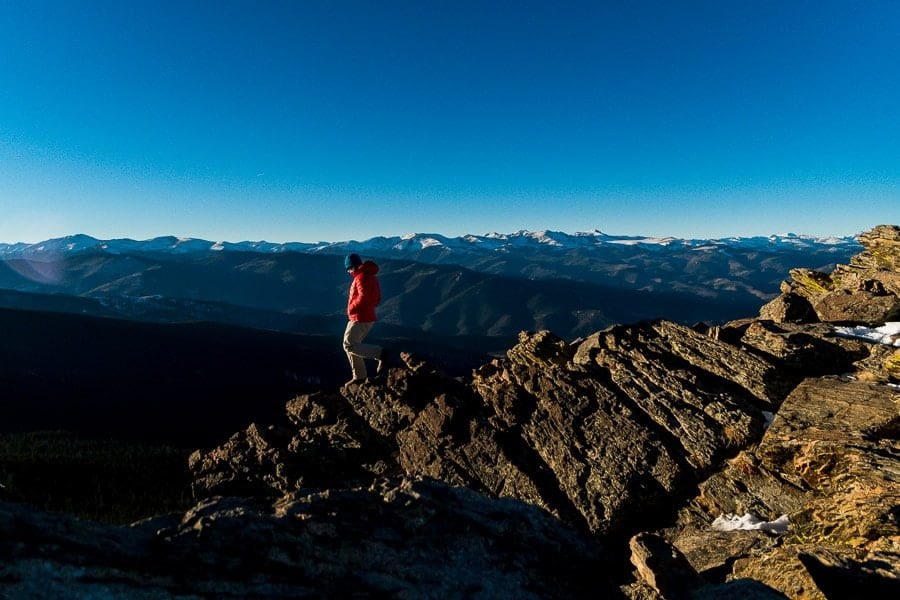
Sony a6500+ Sony 16-70mm f/4 | 1/3200 at f/4 ISO 200
If you’re looking for a main body to use professionally, I would say the Sony a7iii is still the best investment, but the Sony a6500 isn’t far behind.
The main advantage of the a6500 is its smaller form factor and thus smaller lenses. In addition to being smaller, the lenses are much more affordable.
The size being the main advantage of the a6500 is also where it falls short for me. The short battery life and too compact controls are enough to make me hesitate to rely on it too much. The last thing I need is to miss a shot because I can’t change my settings fast enough or my battery died.
However, the Sony a6500 certainly works as a viable backup to keep in the bag in case your main body has a problem. Where it really shines is as a small/lightweight camera for traveling or having on you all the time to document the adventures of life.
I plan on keeping an a6500 around for documenting everyday adventures and taking with me everywhere.
If the best camera is the one you have with you, get a high-quality yet compact and lightweight setup that you will always have with you!

Impressive performance in a compact body. Highly recommended for all level of photographer.





